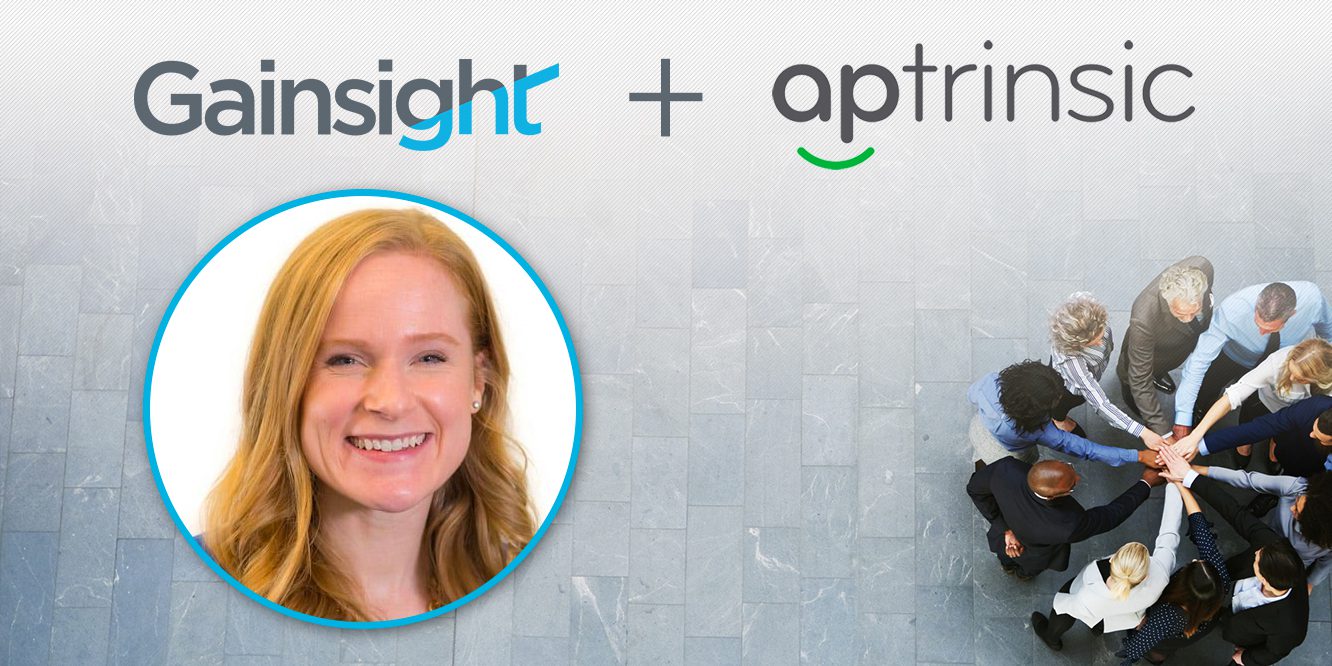Today we announced that Gainsight is acquiring Aptrinsic.
I couldn’t be more excited to start working closely with Aptrinsic’s CEO and co-founder Mickey Alon. I’ve come to respect Mickey deeply as a thought leader, and his vision for how to help his customers is very aligned with ours. In this post I’ll share the “why” behind this acquisition, which gets to the root of Customer Success philosophy. It may even challenge us to think differently about what Customer Success is really all about.
Ask Why
“I need to scale.”
This is a statement I’ve made myself, and that I’ve heard many times over the years from Chief Customer Officers and their teams. It’s such a common refrain at this point that we take for granted that the need to scale is a central responsibility in the CCO role. But perhaps it would be worth our time to ask, “Why?” And to ask it again, and again, and again.
Let’s play devil’s advocate with ourselves.
“Why do you need to scale?”
“Because CS isn’t a priority at my company.”
“Why are you saying it’s not a priority?”
“Because my CFO won’t give me more budget.”
“Why isn’t your current budget sufficient for helping your clients?”
“Because my CSMs have too many accounts.”
“Why is that account load too significant?”
“Because my CSMs are already working nights and weekends in answering customer emails, hosting best-practice calls, conducting trainings, running EBRs.”
“Why do they need to do those things?”
“Well, because our customers need it.”
“But why do they need tons of email responses, calls, trainings, etc.?”
“Well…because that’s what it takes to enable adoption of our product.”
“Why is your product hard to adopt?”
“Well, because…well, we released this new feature recently, and it was half-baked. So we had a slew of calls with customers about that. We also have a backlog of enhancement requests, and it means we have to do this work-around for our customers, which takes some time.”
“Why aren’t you solving the product gaps?”
“Umm… Well, that would be great. But it’s not my responsibility. That’s up to the Product team”
“I thought you said your responsibility was to scale?”
“Right… Well, I guess it’s a shared responsibility.”
“Sounds like you need to have a conversation with your Product leader.”
Interesting.
Customer Success and Product Management Operate in Silos
I think a lot of us in Customer Success want to have conversations with our Product leaders. I’m sure these conversations happen. But they often don’t result in anything meaningful.
That’s because—until today—Customer Success and Product have had no common framework for having conversations. They operate in entirely different worlds. They speak different languages—because they have different data sets.
As much as I’d like to say that we’re perfect at Gainsight, we too have struggled with the problem of silos. A while ago, our Customer Success team launched revised Scorecards for Adoption. We called them Adoption-Breadth (capturing diversity of feature usage) and Adoption-Depth (capturing the degree to which individual users were using the product). We presented them in an executive team meeting, only to hear from the Product team that they were already using their own definitions of Breadth and Depth. We had no idea. Each team was well-intentioned, trying to achieve similar goals. It wasn’t the Product team’s fault. It wasn’t the Customer Success team’s fault, either. The problem was that we weren’t coordinated.
The “CSM of the Gaps” Theory
Lots of people talk about AI and automation—claiming that jobs are being replaced by software. But the reality in the software industry is that Customer Success is often plugging the gaps that products should fill themselves.
When we approach Customer Success with a “CSM of the gaps” philosophy (as others before me have called it), we paper over the root causes that another team is better equipped to solve. We shield them from the information they need to make better decisions. The only data point that the Product leader sees, likely in strategic planning sessions, is that the true cost of CSM is too high—which at first glance looks more like an execution problem that a Customer Success leader should solve with the CFO’s active monitoring.
The other problem with a “CSM of the gaps” approach is that it puts CSM in the COGS bucket—since CSM becomes an essential team to deliver on what you sold. And that means investing in “CSM of the gaps” is terrible for our gross margins. You can’t go public with margins like that.
Imagine a different paradigm. CSMs are entirely free to work on activities that a product can’t solve for: aligning client stakeholders, proposing a success plan, enabling change management. Imagine also that the CSMs are free to facilitate faster expansion, and convert clients to talkative advocates.
In this paradigm, clients are happier and getting more value. The CSMs also are removed from COGS into Sales & Marketing expense—which means better Gross Margins, and a better investment of that expense. CSMs are driving revenue according to the Helix model.
This paradigm only exists in a world where Customer Success and Product Management are aligned on how to solve the problem of scaling.
How to Scale—Together
Back in April, we unveiled the Periodic Table of Customer Success Elements. The goal was to create a simple framework, supported by data and depth of best practices, to help our clients grow the maturity of their Customer Success organization.
Elements are Gainsight’s “solutions.” Each one represents a business objective that companies are looking to solve. And the Gainsight platform is built to solve them.
But we knew that we had some feature gaps. So we conducted dozens of interviews and surveyed our clients to understand what other features they were hoping that Gainsight would provide, to better achieve the Elements goals.
We found that our clients were super interested in the Tech Touch Element (Tt). We also found that maturity across the broader Customer Success industry in Tech Touch, based on self-assessments, was lower than any other Element. Which is consistent with the trend that Customer Success leaders are concerned about the problem of scaling.
We heard that our clients wanted us to enable them to create in-app workflows and in-app surveys, so they could have additional Tech Touch tools besides email, and drive communications from within the product itself, directly where users live.
Our clients also said they wanted to track usage data more effectively, with the goal of aligning with their Product teams on a “source of truth” for how clients are adopting the product—as well as align on what that data implied for product roadmap decisions.
Our clients said loud and clear, “We want to work more effectively with our Product teams. We want to scale from within the product, and we want to influence how the product helps us scale in the future.”
Then we found Aptrinsic.
Aptrinsic essentially “activates” the product as a new channel through which we can generate powerful insights and personalized engagements. Aptrinsic’s features will help with many Elements—among them, Tech Touch (Tt), Adoption Management (Am), Expansion Management (Em), Advocate Engagement (Ae), Experience Health (Cx), and Product Success (Pr).
Do you want to scale?
You don’t have to lead the scaling effort by yourself. Talk to your Gainsight team member or contact us here about how we can help you partner with your Product team.
On a Philosophical Note
Closer collaboration between Customer Success and Product Management will help us get one step closer to scaling our CS teams through better products. But there’s a more meaningful result that can stem from this collaboration. I wrote the following in a recent post on Servant Leadership:
“There’s a particularly strong purpose in Customer Success. How humans interact with technology is a fundamental question of our time. Software is eating the world, robots are more capable than ever, and AI can replicate at least some human capabilities. Interestingly, Customer Success Managers are at the forefront of human-machine interaction in the business world. When software has bad UI, when it’s imposed top-down, or when it’s not natural to adopt, the CSM is on the front lines, empathizing with the poor human being who’s struggling to use the software. It’s the CSM’s job to break down the barrier between human and machine, in a way that’s human-first. To me, serving that purpose is among the most valuable causes we can contribute to in our lifetimes.”
What if Customer Success could help us develop software from the start that is human-first?

